Changes in Gene Expression of Whiteflies, Bemisia tabaci MED Feeding on Tomato Plants Infected by One of the Criniviruses, Tomato Chlorosis Virus through Transcriptome Analysis
- PMID: 37261104
- PMCID: PMC10228217
- DOI: 10.1155/2023/3807812
Changes in Gene Expression of Whiteflies, Bemisia tabaci MED Feeding on Tomato Plants Infected by One of the Criniviruses, Tomato Chlorosis Virus through Transcriptome Analysis
Abstract
Tomato chlorosis virus (ToCV), transmitted by the whitefly, Bemisia tabaci (Gennadius; Hemiptera: Aleyrodidae) has been continuously emerging on tomato plants and causing a significant economic loss throughout China. In the current study, RNA-Seq analysis was used to explore the gene expression profiles of B. tabaci Mediterranean (MED) that fed on both ToCV-infected and -uninfected tomato plants for 6, 12, 24, and 48 hours, respectively. The results revealed that dynamic changes occurred in the gene expressions of whiteflies at different time intervals after they acquired the virus. A total of 1709, 461, 4548, and 1748 differentially expressed genes (DEGs) were identified after a 6, 12, 24, and 48 hours feeding interval for the viral acquisition, respectively. The least number of expressed genes appeared in whiteflies with the 12 hours feeding treatment, and the largest numbers of those found in those with 24 hours feeding treatment. Kyoto Encyclopedia of Genes and Genomes pathway analysis revealed that B. tabaci MED responded to ToCV acquisition through altering its nerve system development, fertility, detoxification, glucose metabolism, and immune function before it lost its ability to transmit the virus. The number of DEGs, degree of differential gene expressions, expression level of the same gene, involved biological processes, and metabolic functions in whiteflies post the 12 hours feeding, and viral acquisition were different from those from other three feeding treatments, which could be a significant finding suggesting an effective control of B. tabaci MED should be done less than 12 hours after whiteflies started feeding on ToCV-infected tomatoes. Our results further provided a clarified understanding in how B. tabaci was protected from viral acquisitions through comparison of the differential profile of gene expressions in whiteflies feeding on plants that were infected by semipersistent viruses.
Copyright © 2023 Jing Zhao et al.
Conflict of interest statement
The author(s) declare(s) that they have no conflicts of interest.
Figures


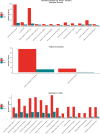

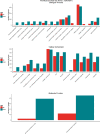
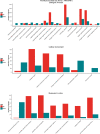
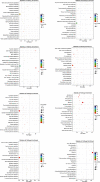
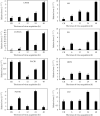
Similar articles
-
Transcriptome analysis of the whitefly, Bemisia tabaci MEAM1 during feeding on tomato infected with the crinivirus, Tomato chlorosis virus, identifies a temporal shift in gene expression and differential regulation of novel orphan genes.BMC Genomics. 2017 May 11;18(1):370. doi: 10.1186/s12864-017-3751-1. BMC Genomics. 2017. PMID: 28494755 Free PMC article.
-
Differences in gene expression in whitefly associated with CYSDV-infected and virus-free melon, and comparison with expression in whiteflies fed on ToCV- and TYLCV-infected tomato.BMC Genomics. 2019 Aug 15;20(1):654. doi: 10.1186/s12864-019-5999-0. BMC Genomics. 2019. PMID: 31416422 Free PMC article.
-
Transcriptome Profiling of the Whitefly Bemisia tabaci MED in Response to Single Infection of Tomato yellow leaf curl virus, Tomato chlorosis virus, and Their Co-infection.Front Physiol. 2019 Apr 3;10:302. doi: 10.3389/fphys.2019.00302. eCollection 2019. Front Physiol. 2019. PMID: 31001125 Free PMC article.
-
Effects of insulin-like peptide 7 in Bemisia tabaci MED on tomato chlorosis virus transmission.Pest Manag Sci. 2023 Apr;79(4):1508-1517. doi: 10.1002/ps.7329. Epub 2023 Jan 15. Pest Manag Sci. 2023. PMID: 36533303
-
Transmission of Begomoviruses and Other Whitefly-Borne Viruses: Dependence on the Vector Species.Phytopathology. 2020 Jan;110(1):10-17. doi: 10.1094/PHYTO-07-19-0273-FI. Epub 2019 Nov 18. Phytopathology. 2020. PMID: 31544592 Review.
References
-
- Oliviera M. R. V., Henneberry T. J., Anderson P. History, current status, and collaborative research projects for Bemisia tabaci. Crop Protection . 2001;20(9):709–723. doi: 10.1016/S0261-2194(01)00108-9. - DOI
-
- Aregbesola O. Z., Legg J. P., Sigsgaard L., Lund O. S., Rapisarda C. Potential impact of climate change on whiteflies and implications for the spread of vectored viruses. Journal of Pest Science . 2019;92(2):381–392. doi: 10.1007/s10340-018-1059-9. - DOI
-
- Horowitz A. R., Ghanim M., Roditakis E., Nauen R., Ishaaya I. Insecticide resistance and its management in Bemisia tabaci species. Journal of Pest Science . 2020;93(3):893–910. doi: 10.1007/s10340-020-01210-0. - DOI
LinkOut - more resources
Full Text Sources

